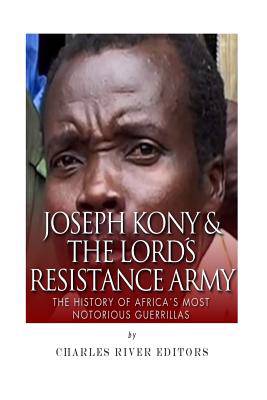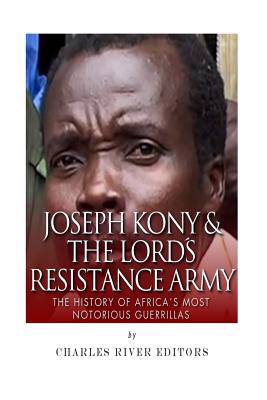
- Afhalen na 1 uur in een winkel met voorraad
- Gratis thuislevering in België vanaf € 30
- Ruim aanbod met 7 miljoen producten
- Afhalen na 1 uur in een winkel met voorraad
- Gratis thuislevering in België vanaf € 30
- Ruim aanbod met 7 miljoen producten
Zoeken
Joseph Kony & The Lord's Resistance Army
The History of Africa's Most Notorious
Charles River
Paperback | Engels
€ 17,95
+ 35 punten
Omschrijving
*Includes pictures *Includes online resources and a bibliography for further reading *Includes a table of contents The Lord's Resistance Army appeared on the conflict landscape of Central Africa at the dawn of perhaps one of the bleakest period of post independence African history: the 1980s and 1990s. This was the era of Afro-pessimism, during which the proliferation of war and crisis in Africa appeared simply overwhelming. It was during this period that the continent began to feel the full weight of the AIDS crisis, which was exacerbated by economic stagnation, continent wide corruption, poor governance, the highest levels of unemployment since decolonization and apparently unsolvable conflicts in regions as diverse as Ethiopia, Mozambique, Angola, Western Sahara, Liberia, Sierra Leone, Somalia, and of course that region of perennial instability, the Great Lakes region of central Africa. Here a complex mix of colonial legacy, ethnic incompatibility, isolation and lawlessness has combined in the years since independence to create a theatre of ongoing political unrest. Indeed, it was this region that saw perhaps one of the most iconic episodes of the 1990s, the Rwandan Genocide, the ramifications of which have included two major wars fought within the Congo, deadly ethnic equalization throughout the region, knock-on wars in Uganda and Central African Republic and an ongoing see-saw balance of power in an extremely volatile region. Another similar region of ongoing instability that factors into this subject has been the broad axis that includes South Sudan, northern Uganda, northern Democratic Republic of Congo (DRC), southern Chad and the Central African Republic (CAR). The engine of conflict in this broad region, in particular in western and southern Sudan, has been the fundamental incompatibility of the largely Islamic north and the black Christian/animist south. This apparently unbridgeable gulf has proved to be the catalyst of nearly 60-years of perpetual conflict. The Lord's Resistance Army insurgency straddles both of these axes, and although it is limited in scope by narrow ethnic appeal and limited political pretensions, it has nonetheless proved in the nearly three decades of its existence to be very persistent, and extremely difficult so far to eradicate. This book looks at the insurgency of America's most notorious guerrilla army, and the manner in which Joseph Kony came to the attention of the world. Along with pictures of important people, places, and events, you will learn about the Lord's Resistance Army like never before, in no time at all.
Specificaties
Betrokkenen
- Auteur(s):
- Uitgeverij:
Inhoud
- Aantal bladzijden:
- 40
- Taal:
- Engels
Eigenschappen
- Productcode (EAN):
- 9781508975014
- Verschijningsdatum:
- 21/03/2015
- Uitvoering:
- Paperback
- Formaat:
- Trade paperback (VS)
- Afmetingen:
- 152 mm x 229 mm
- Gewicht:
- 68 g

Alleen bij Standaard Boekhandel
+ 35 punten op je klantenkaart van Standaard Boekhandel
Beoordelingen
We publiceren alleen reviews die voldoen aan de voorwaarden voor reviews. Bekijk onze voorwaarden voor reviews.








